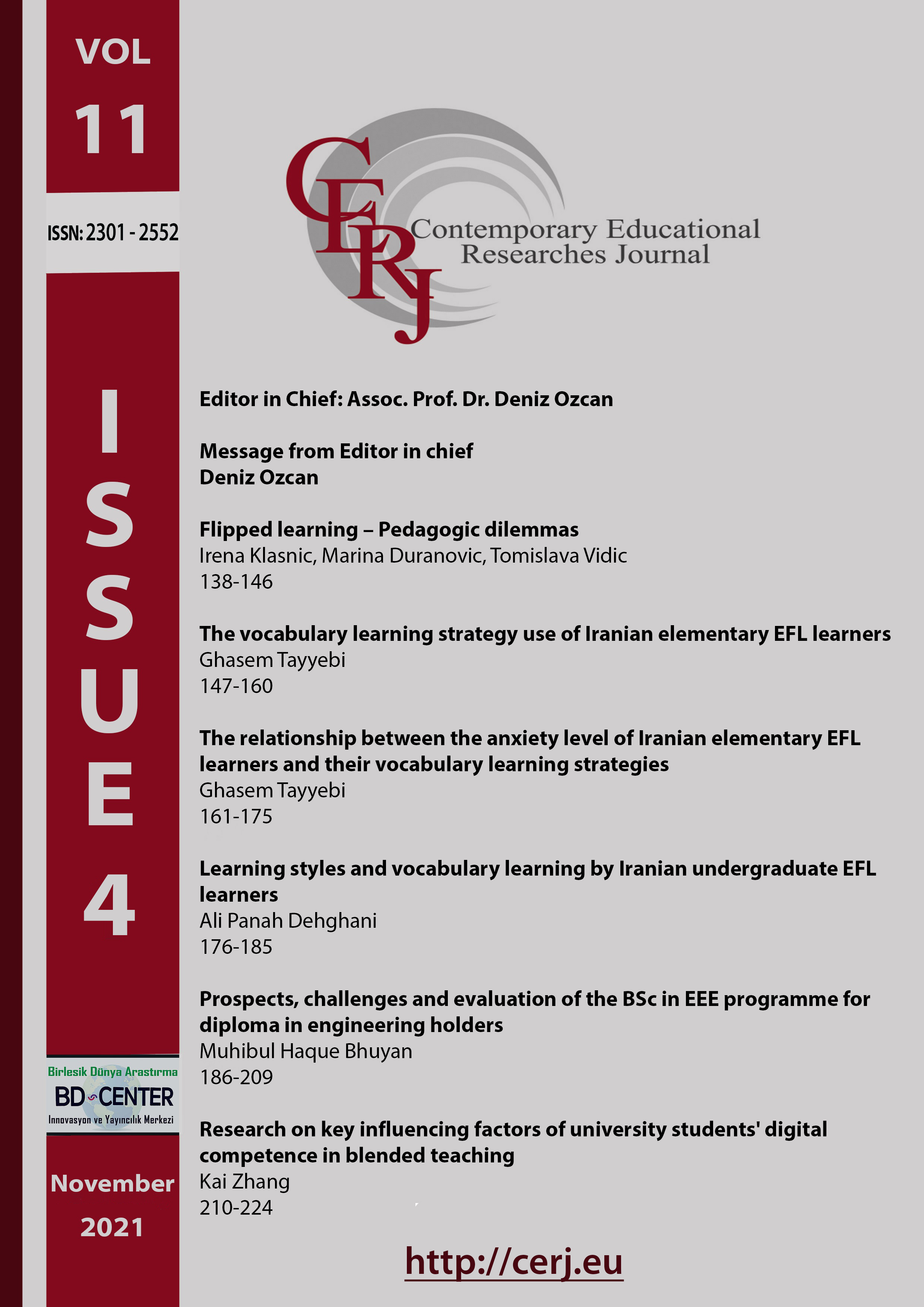Learning styles and vocabulary learning by Iranian undergraduate EFL learners
Main Article Content
Abstract
Each English as a foreign language (EFL) learner may have a particular learning style which may affect the mastering of new language skills and components, one of which is vocabulary. The current study aims to find out the preferred learning style(s) of Iranian undergraduate EFL learners and their achievement in the vocabulary test. Forty-four undergraduate students took part in the study. visual, auditory, reading/writing and kinaesthetic learning style questionnaires and the teacher developed test of vocabulary were used in this study. The validity and reliability of the learning style questionnaire and the teacher developed test of vocabulary were determined. The data were collected and analysed using appropriate statistical analyses including descriptive statistics and one way analysis of variance. The results indicated that the participants were mainly auditory learners. Moreover, it was found that visual and multimodal learners had the best performances on the vocabulary test.
Keywords: Learning style, vocabulary learning, undergraduate EFL learners.
Downloads
Article Details

This work is licensed under a Creative Commons Attribution 4.0 International License.
Authors who publish with this journal agree to the following terms:
- Authors retain copyright and grant the journal right of first publication with the work simultaneously licensed under a Creative Commons Attribution License that allows others to share the work with an acknowledgement of the work's authorship and initial publication in this journal.
- Authors are able to enter into separate, additional contractual arrangements for the non-exclusive distribution of the journal's published version of the work (e.g., post it to an institutional repository or publish it in a book), with an acknowledgement of its initial publication in this journal.
- Authors are permitted and encouraged to post their work online (e.g., in institutional repositories or on their website) prior to and during the submission process, as it can lead to productive exchanges, as well as earlier and greater citation of published work (See The Effect of Open Access).
